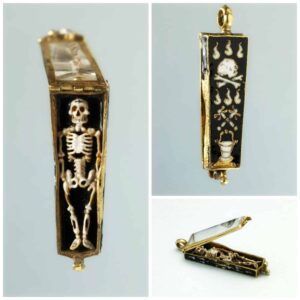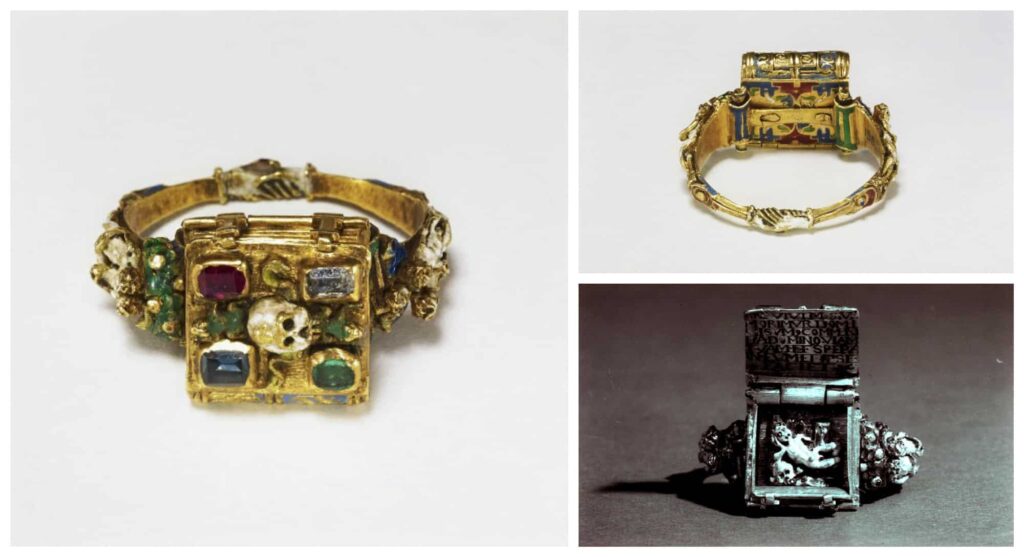
© Trustees of the British Museum.
Memento mori jewelry is the name given to sixteenth through eighteenth-century jewelry that was created as a reminder of the inevitability of death and the need to live piously. Translation from Latin, “remember you must die,” is very clearly indicative of the objective of the theme. Skulls, skeletons, and coffins, often worked in gold and enamel were the predominant motifs vividly illustrating the underlying sentiment of pending mortality. An important part of the memento mori jewel was the use of text to express thoughts of death, mortality, remembrance, and religion. Composed in Latin, French or English they were either engraved or enameled on the outside of a jewel or secretly on the inside, viewable only by the intended recipient.
Rings were the most common form of memento mori jewels although they could also take the form of lockets, pendants, and brooches. The sixteenth century saw an increase in bequests for mourning rings. Often these were just plain bands engraved with a sentiment referencing the departed (sometimes specifically outlined in the will.) Money was left for the purpose of creating the rings along with a specified list of mourners. In the mid-seventeenth century, the theme merged with memorial jewelry and it became popular to have the hair of the departed person, along with relevant dates and initials worked into the piece alongside the skull, coffin symbols and message. The tradition flourished in the eighteenth century but the name of the individual being memorialized became more prominent, the mourning motifs became somewhat less gruesome and the use of intricate hairwork and elaborate allegories were de rigueur.

© Trustees of the British Museum.